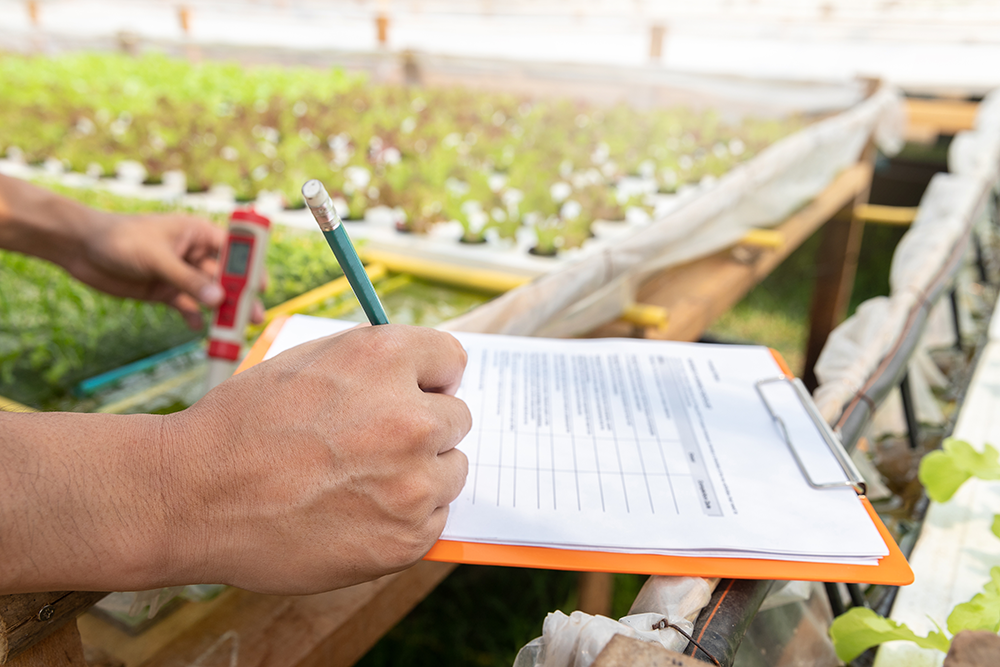Select Your Country/Region
Current Region:
 USA (EN)
USA (EN)
Choose a different country or region to see the content specific to your location
In hydroponic farming, maintaining the right nutrient balance is essential for plant health and high yields. One of the most important factors in achieving this balance is EC (Electrical Conductivity). EC measures the concentration of nutrients in the water, giving growers insight into how much food their plants are getting.
Managing EC properly ensures plants receive what they need at every growth stage, helping avoid common problems like nutrient deficiencies or toxic buildup.
In this post, we’ll break down everything you need to know about EC, how to control it, and how Dosatron’s dosing systems simplify water and nutrient management for hydroponic setups.
Electrical Conductivity (EC) measures how well water can conduct electricity, which depends on the concentration of dissolved salts in the water. In hydroponics, these salts include essential common nutrients like nitrogen (N), phosphorus (P), potassium (K), and trace minerals. A higher EC means more nutrients are available, while a lower EC suggests that the solution is diluted or lacking key minerals. 7
EC is a valuable indicator because it provides a snapshot of the nutrient concentration in the water without needing individual chemical tests for each nutrient. It’s especially important in hydroponics since plants depend entirely on water for both hydration and nutrition.
Measuring EC accurately requires the right tools and techniques.
Here’s a step-by-step guide:
Different crops thrive at different EC levels, and their needs change as they move through different growth stages.
For example:
Tailoring your nutrient solution’s EC to the plant’s specific needs will result in healthier plants, faster growth, and better yields.
Pro Tip: If you’re growing multiple types of plants in the same system, group them by their EC preferences. This way, you can maintain separate nutrient reservoirs or zones, ensuring each crop gets exactly what it needs.
Plants require different nutrient concentrations at various stages of growth. During the seedling stage, plants are delicate and require a lower EC, while during flowering or fruiting, their nutrient demands increase significantly.
Pro Tip: Gradually increase EC as the plants transition from seedling to vegetative to flowering stages. For example:
Controlling EC is not just about keeping it within a specific range; it also requires attention to environmental factors and plant behavior. Here are some common challenges and solutions:

Managing EC manually can be time-consuming, especially in larger hydroponic operations. While advance monitoring of EC requires dedicated controllers and probes, Dosatron's strength lies in its ability to deliver nutrients consistently and efficiently.
Once your nutrient blend is calibrated, Dosatron can be used to adjust EC up or down with precision and repeatability, supporting a balanced nutrient program with minimal effort. Simply set your Dosatron to adjust both pH and EC to target levels and you will help ensure your plants receive the perfect nutrient mix with every watering cycle.
Here's how Dosatron makes EC control easier:
While Dosatron focuses on nutrient delivery, EC readings, often reflected as TDS or PPM, can be analyzed separately to fine-tune the nutrient solution. With a reliable dosing system in place, growers can confidently manage their fertilizer programs with less time spent on manual adjustments.
Many growers rely on Dosatron systems to maintain consistent EC levels and improve crop quality. Here’s what some of our customers say:
“Dosatron’s direct-inject systems give us precise control over nutrient delivery, saving time and reducing human error.” — Tyler Geld, Head of Cultivation, Kings Garden
“For large-scale hydroponics, nothing beats the accuracy and ease of Dosatron’s fertigation controllers.” — John Hartsoe, Program Director, Green Dot Lab
When EC levels are properly managed, plants grow faster, healthier, and with fewer issues. Here are some key benefits:
EC control in hydroponics is essential to maximize plant health and achieve high yields. While manual control can work, Dosatron's automated dosing systems offer a more efficient and accurate way to manage nutrient supply, especially if you've used a reverse osmosis system upstream.
Reverse osmosis (RO) systems are highly effective at removing dissolved salts, minerals and impurities from water, leaving almost pure water with extremely low electrical conductivity (EC). This purified water is commonly used in hydroponics as it provides a clean starting point for nutrient management, allowing growers to precisely control the levels of nutrients delivered to their plants.
Whether you're a small grower or manage a large hydroponic farm, Dosatron gives you the tools you need to easily maintain optimal EC levels.
Switch to Dosatron today and watch your plants thrive like never before. With real-time monitoring from our controllers, automated dosing and customized recipes, Dosatron takes the guesswork out of EC control.